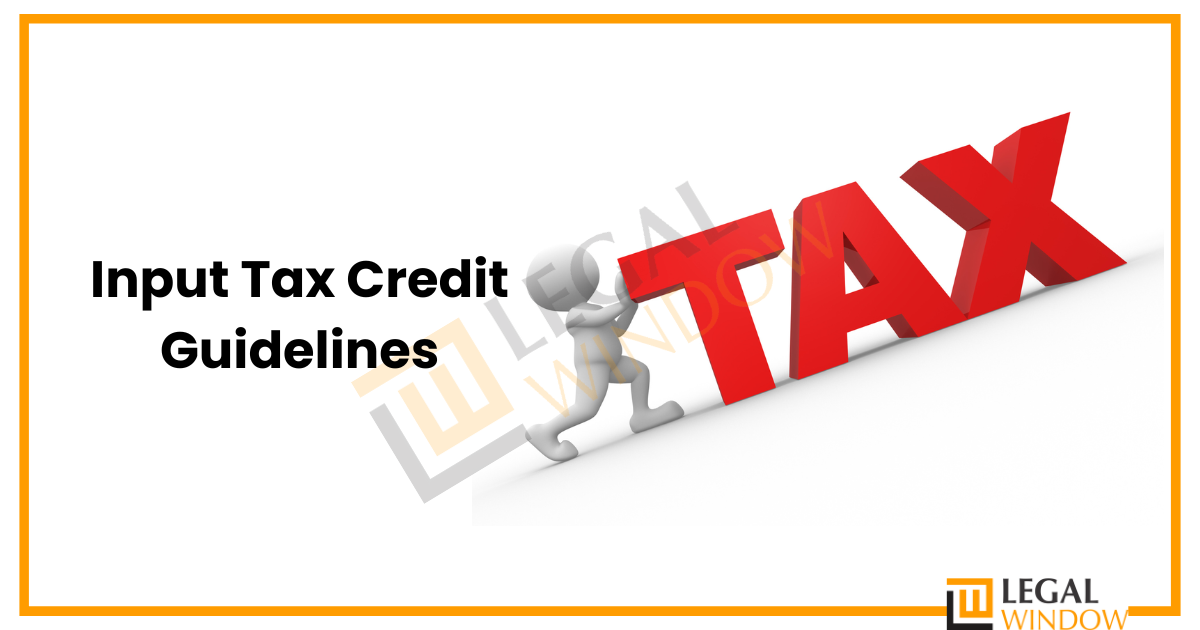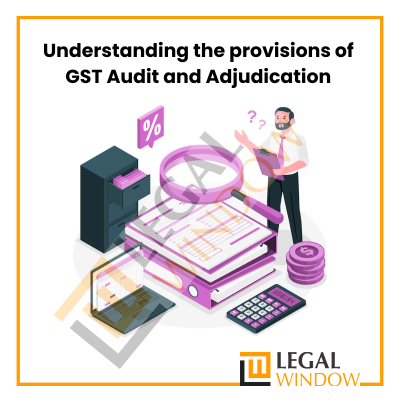
Understanding Input Tax Credit in India guidelines under the GST framework is essential for optimizing tax strategies. By delving into the principles and processes mentioned in our comprehensive guide, taxpayers can ensure compliance and harness maximum benefits. As GST regulations evolve, staying informed about ITC empowers individuals and businesses to navigate tax issues confidently.
Table of Contents
- Who can claim ITC?
- What cannot be claimed as ITC?
- Claiming ITC: Business Use Only and Reversals You Need to Know
- Documentation of Input Tax Credit
- Claiming ITC on Capital Goods under GST: Know the Exceptions
- Sending Goods for Processing? Don’t Lose out on ITC under GST!
- What is an ISD?
- Moving On and Saving: ITC on Business Transfers under GST
- Navigating ITC Claims under GST
- Final word
Who can claim ITC?
- Registered for GST? Check! You can only claim ITC if you’re a registered GST taxpayer.
- Got a bill? Keep it safe! You’ll need a valid tax invoice for the goods or services you purchased.
- Did you receive what you paid for? ITC can only be claimed once you’ve actually received the goods or services (for installments, wait till the last one arrives).
- Tax paid by seller. Crucial! The seller you bought from must have paid the GST they charged you to the government.
- Depreciation on capital goods? No ITC! If you’ve claimed depreciation on the tax portion of a long-lasting asset (capital good), you can’t claim ITC for it.
- Composition scheme? No ITC allowed! Businesses opting for the simpler composition scheme under GST cannot claim Input Tax Credit guidelines .
What cannot be claimed as ITC?
Remember, ITC is for business only! You can’t claim credit for:
- Personal use: personal items that we buy for our own use does not qualify for Input Tax Credit guidelines .
- Tax-exempt supplies: If goods or services are exempt from GST and you are selling it then you can’t ITC on such purchase.
- Excluded supplies: There might be specific types of goods or services where ITC isn’t allowed, regardless of business use.
Claiming ITC: Business Use Only and Reversals You Need to Know
ITC for Business Only: So, the concept of ITC under GST is that you can only claim Input Tax Credit guidelines for goods and services used for your business operations. It doesn’t apply to personal purchases, or anything used for making exempt supplies (those not subject to GST). There is also common credit under GST.
Below mentioned are the situation in which ITC reversal is required:
- Late Invoice Payments: People need to reverse GST Input Tax Credit in India if the supplier payment is not done within 180 days of receiving invoice.
- Credit Notes to Head Offices (ISD): This applies to specific scenarios involving credit notes issued to Inter-State Dealers (ISD) or a Head Office (HO). In such cases, a reversed ITC might need to be reinstated.
- Partial Business Use: If you use purchased goods or services partly for business and partly for personal use (or exempt supplies), you’ll need to reverse the ITC proportionally for the non-business portion. This applies to both regular goods and capital goods.
- Insufficient Reversal: After filing your annual return, there might be a discrepancy. If the total ITC claimed on exempt/non-business purchases is higher than the reversed ITC during the year, you’ll need to pay the difference along with interest.
- Reporting Reversals: Details of ITC reversals are reported in your GSTR-3B form.
Documentation of Input Tax Credit
Get the eligible ITC under GST following documents are needed:
- Standard Invoice: The invoice will be issued at the time of goods and services purchase, that is known as a standard invoice.
- Optional Debit Note: If a person what to purchase more than is more than the value already specified in invoice then a debit note will be issued for the change in taxable value and tax amount.
- Bill of Entry (Imports): Importing goods? You’ll need a bill of entry issued by customs for claiming ITC.
- Alternative Bill of Supply: In specific cases, you might receive a bill of supply instead of a regular invoice. This applies for transactions below Rs. 200 or under the reverse charge mechanism of GST.
- ISD Invoice/Credit Note (For ISD Services): Utilizing services through an Input Service Distributor (ISD)? Ensure you have the invoice or credit note they provide, complying with GST invoice rules.
The ITC can be claimed easily if the above-mentioned documents are kept in line.
Claiming ITC on Capital Goods under GST: Know the Exceptions
The capital goods are also eligible for Input Tax credit in India under GST, capital goods refer to assets used for business. However, there are a few exceptions to keep in mind:
- Exempt Goods: You can’t claim ITC on capital goods used exclusively to make products or provide services that are exempt from GST.
- Personal Use: ITC isn’t available for capital goods used solely for personal purposes, not related to your business.
If you’ve claimed depreciation on the tax portion of a capital good, you won’t be able to claim ITC for it. Remember, claiming ITC correctly ensures you get the most out of this tax benefit!
Sending Goods for Processing? Don’t Lose out on ITC under GST!
Running a business often involves collaboration. In the world of GST, there’s a concept called “job work” where you might send goods to a specialist for further processing. Here’s how ITC (Input Tax Credit in India) applies in such scenarios:
- Good News for Principal Manufacturers: Imagine you’re a shoe manufacturer who sends unfinished shoe uppers to a job worker for attaching the soles. Under GST, you can claim ITC (tax credit) on the purchase of those uppers you sent for processing.
- Double Convenience – Two Ways to Send Goods: From Your Factory: You can directly send the uppers from your own place of business to the job worker or Direct from Supplier: You can arrange for the supplier of the uppers to send them directly to the job worker on your behalf.
Important Rule: Timely Return is Key
There’s a catch, though. To claim ITC, you need to get the processed goods back within a specific timeframe:
- Year for Regular Goods: For most goods sent for job work, you have 1 year to receive them back and claim ITC.
- Years for Capital Goods: If you’re sending capital goods (long-lasting assets), you have a longer window of 3 years to receive them back for ITC purposes.
What is an ISD?
An ISD can be the head office, a specific branch, or even the registered office of a business under GST. Its key role is to:
- Collect ITC: The ISD gathers the Input Tax Credit in India (ITC) on all service-related purchases made by the company.
- Distribute to Benefit: The ISD then distributes this ITC proportionally among all its branches (recipients), categorized under CGST, SGST/UTGST, IGST, or cess (depending on the tax type).
Think of it this way: The ISD acts like a central hub, collecting and sharing the tax credit benefit across different branches within the same business entity. This simplifies tax management and ensures everyone gets their fair share of the ITC advantage.
Moving On and Saving: ITC on Business Transfers under GST
When businesses undergo changes like mergers, amalgamations, or even transfers of ownership, the question of Input Tax Credit (ITC) arises. Here’s what you need to know:
Good News for Sellers: Transferring ITC Benefits! If you’re selling your business, you can take comfort in knowing that any unutilized ITC (tax credit) you’ve accumulated can be transferred to the new owner (transferee). This ensures you don’t lose out on this valuable benefit.
For the Claim of ITC under GST in cases of transfer, the process is straightforward:
- Transferor Files Declaration: As the seller (transferor), you’ll need to file a declaration in a specific form (GST ITC-02) through the GST portal. This declaration details the unutilized ITC you wish to transfer.
- Transferee Takes Action: The new owner (transferee) of the business then needs to take action on their end, accepting the transferred ITC through the GST portal.
- Maximizing Benefits for All: By understanding this process, both sellers and buyers can ensure a smooth and tax-efficient transfer of business under GST.
Navigating ITC Claims under GST
Keeping track of Input Tax Credit in India (ITC) under GST can seem complex. This guide clarifies the process for regular taxpayers:
- Reporting ITC in GSTR-3B: Every month, you’ll report your ITC claimed in your GST return (Form GSTR-3B). Table 4 of this form requires a breakdown of:
- Eligible ITC: This is the valid tax credit you can claim on your purchases.
- Ineligible ITC: This includes ITC on exempt supplies or purchases for personal use, which cannot be claimed.
- ITC Reversed: In some cases, you might need to reverse previously claimed ITC (explained later).
- Claiming Based on GSTR-2B: Currently, you can only claim ITC that appears in your GSTR-2B. This form reflects the details reported by your suppliers about the tax they charged you. (Note: GSTR-2B has been replaced with a new return system as of April 2023).
- Matching Records for Smooth Claims: To ensure you claim ITC accurately, it’s crucial to match your purchase records with the information in your GSTR-2B (or the new equivalent return system).
By understanding these points, you can navigate ITC claims under GST with greater confidence and avoid potential issues.
Final word
In brief, understanding the mechanics of Input Tax Credit (ITC) within the GST framework holds significant value for businesses aiming to reduce tax expenditures. Our guide lays out actionable steps to ensure adherence to regulations and capitalize on ITC benefits. With the dynamic nature of GST, keeping ITC updated is vital for instilling confidence and control in individuals and businesses alike as they manage their tax affairs.
CA Pulkit Goyal, is a fellow member of the Institute of Chartered Accountants of India (ICAI) having 10 years of experience in the profession of Chartered Accountancy and thorough understanding of the corporate as well as non-corporate entities taxation system. His core area of practice is foreign company taxation which has given him an edge in analytical thinking & executing assignments with a unique perspective. He has worked as a consultant with professionally managed corporates. He has experience of writing in different areas and keep at pace with the latest changes and analyze the different implications of various provisions of the act.
Categories
- Agreement Drafting (23)
- Annual Compliance (11)
- Change in Business (36)
- Company Law (148)
- Compliance (89)
- Digital Banking (3)
- Drug License (3)
- FEMA (17)
- Finance Company (42)
- Foreign Taxation (6)
- FSSAI License/Registration (14)
- GST (118)
- Hallmark Registration (1)
- Income Tax (199)
- Latest News (34)
- Miscellaneous (164)
- NBFC Registration (8)
- NGO (14)
- SEBI Registration (6)
- Section 8 Company (7)
- Start and manage a business (20)
- Startup/ Registration (127)
- Trademark Registration/IPR (40)
Recent Posts
- Farmer Producer Companies-Major provisions under Companies Act April 26, 2024
- Detailed Analysis of Section 179 of the Companies Act, 2013 April 24, 2024
- Maximise Your Tax Savings: Power of Form 12BB April 23, 2024
About us
LegalWindow.in is a professional technology driven platform of multidisciplined experts like CA/CS/Lawyers spanning with an aim to provide concrete solution to individuals, start-ups and other business organisation by maximising their growth at an affordable cost.







